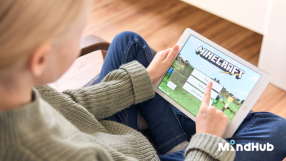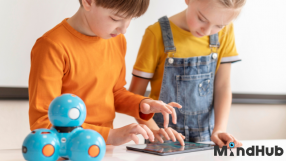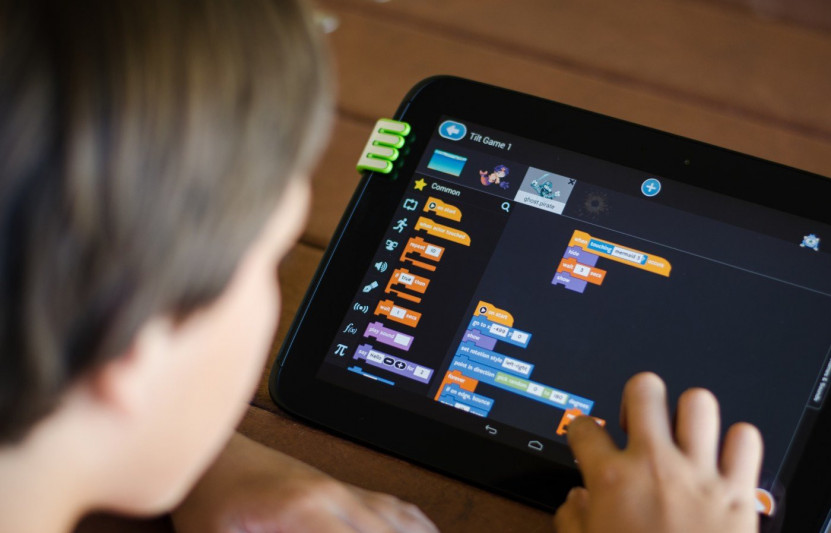
Learning a programming language is sometimes a difficult endeavour for children, as it involves learning the basic concepts of programming while learning the syntax. That's why we at MindHub use tools that make it possible to learn the basics of programming by arranging visual blocks of code.
And if today it is possible for 4-5-year-old children to learn the alphabet of their native language or the English alphabet, then why not master the alphabet of programming languages at this age?
As Mitchel Resnick, a professor at the Massachusetts Institute of Technology (MIT), puts it in an article on the subject: “What's important in the learning process is that children “are not just learning to code, they are coding to learn”. Even this skill alone is a path toward a better and prosperous future for them. And that's something we all want for our kids, right?
What do we mean by “blocks” and types of tools in block programming
“Blocks” are actually “pieces” of instructions used by children to create a program that performs the action they want.
One of the most popular visual programming environments is Scratch. By creating and sharing their Scratch projects, young people improve their math skills, creative thinking, learn to think systematically and work together. By combining these building blocks of coding in different ways, students can achieve different effects, create variables, spin loops, play sounds, etc.
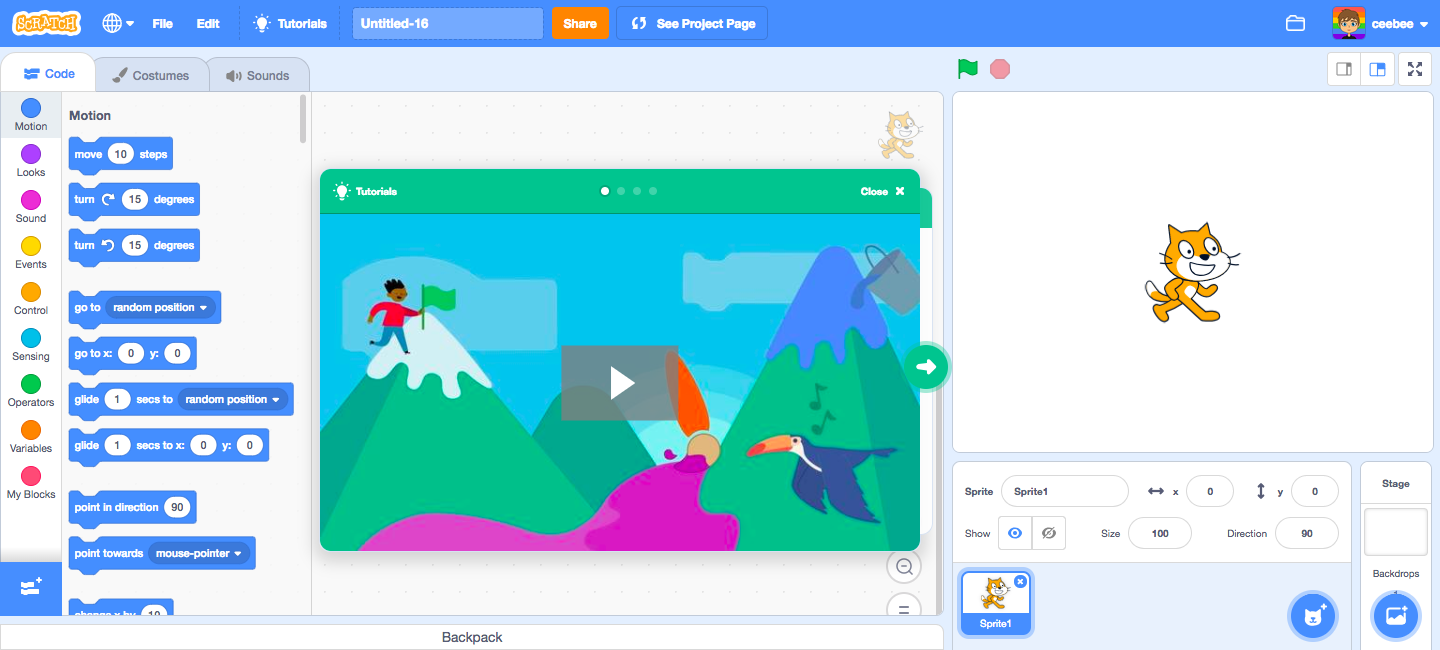
Another popular platform is Hopscotch, through which children can choose different characters to manipulate or create text objects to use in their projects. The application provides a basic set of control instructions, suitable for beginners in programming.
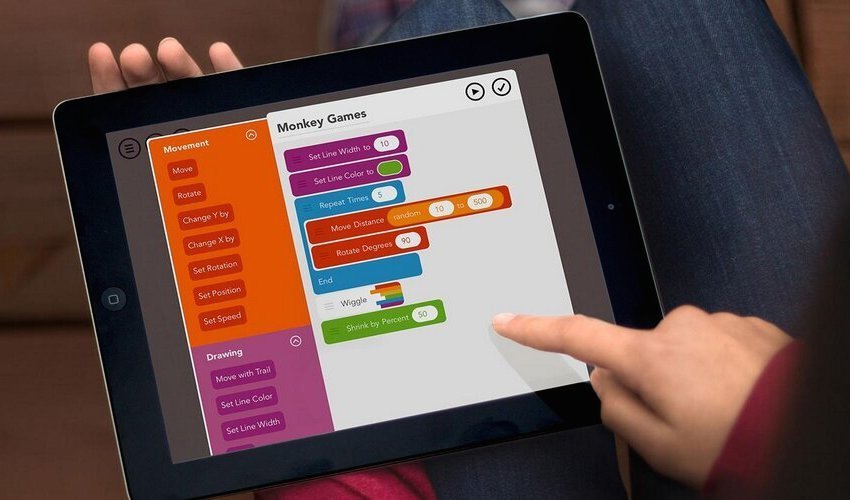
Tynker is a platform that can easily become a favourite of both novice programmers and their parents or teachers. The web application interface looks similar to Scratch.
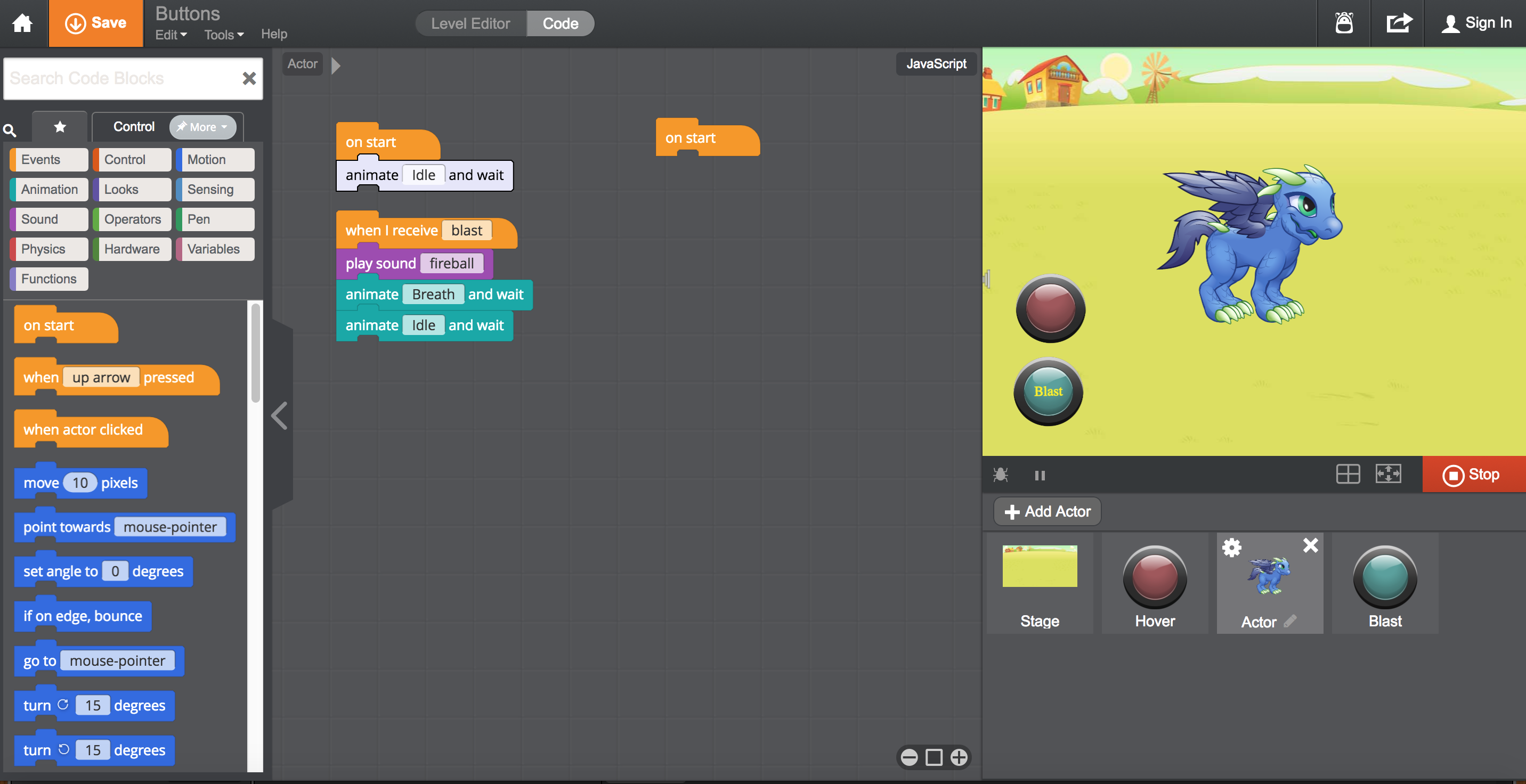
In addition to the study material itself, it also includes sample lesson plans for beginners, classroom management tools, and online presentations of programs created by students. The lessons themselves allow for a flexible learning schedule and children can easily grasp their content even without guidance.
What are the benefits of using block programming in education?
Accessible and fast
Block-based programming is the best solution when we want to develop children's analytical and logical thinking. This is because all they have to do is connect visual “building blocks” in a logical order.
Programming without syntax
Block-based programming lessens the burden of using complex syntax and allows students to focus on programming in a quick and easy way. Code written in visual blocks has a strong expressive power and can be mixed with text-based code written in mainstream programming languages.
Co-creation of knowledge enhances learning
When students work as a team on a project and can explain exactly what they have accomplished to their classmates, this further enhances their performance and develops their skills.
As a result, children are continuously striving to improve their programs by adding new instructions and experimenting with different blocks and combinations. In this way children turn from everyday users of technology into creators.
Block programming is not just an exciting experience for learners. With its assistance they can program not only on the small screen of the device, but even robots – both their behaviour and countless additional features.
If everything said so far sounds interesting to you, there is no need to wait for the right moment to introduce your child to block programming, because the sooner the better!
Do it now by registering him/her for a free demo lesson or for one of our courses for beginners.
